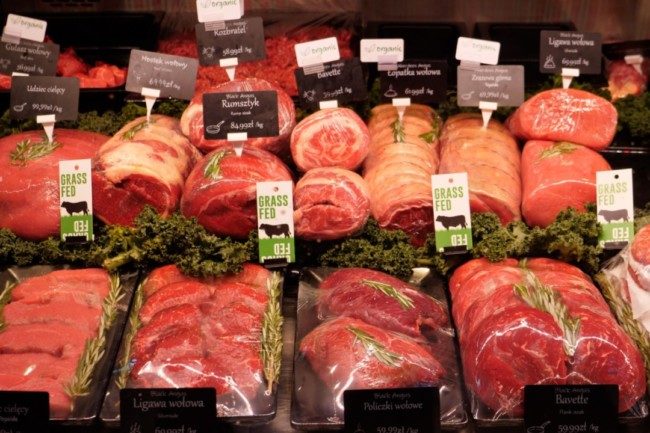Optimism among meat processors regarding the direction their companies and the industry are heading in 2024 was one of the key findings in the MEAT+POULTRY 2023-2024 Capital Spending Trends survey, conducted in partnership with the North American Meat Institute (NAMI). The research was facilitated by Cypress Research and presented as part of a Dec. 7 webinar, Meat Industry Outlook: 2024 Policy, Economy and Capital Spending Trends hosted by NAMI. Besides looking closer at results of the capital spending survey, the event also delved into factors influencing processors’ outlook in 2024, including insight into the political landscape, the 2024 elections, federal budget challenges and other key policy issues.
The survey of 213 professionals found 88% of meat processing professionals are positive about their company’s outlook for 2024 with 76% being positive about next year’s US industry outlook, said Cypress Research President Marjorie Hellmer. Still, only 46% of professionals were very positive about their company outlook with 42% being somewhat positive. At the same time, 17% were very positive about the US industry outlook, and 59% were somewhat positive about industry outlook in the country.
“We are seeing almost equal shares of professionals reporting somewhat to very positive for 2024, so I would interpret companies’ positive outlook as a bit more measured in terms of the overall level of enthusiasm,” Hellmer said.
Additionally, 25% of industry professionals anticipate a better 2024 compared with 2023, with 37% of professionals at larger companies anticipating a more positive 2024 compared with 20% of professionals at smaller companies.
Continuing to prioritize capital investments will also be an emphasis among processors in the coming year, according to the survey. Approximately 41% of processors reported they increased their capital investments in 2023, and 43% plan to increase such investments in 2024. Overall, meat and poultry professionals designated 10.9% of their annual revenue for capital expenditures in 2023, and they anticipate spending 11.4% of their revenue on such expenditures in 2024.
Packaging represents the largest segment for equipment investment, with 59% of processors planning to spend significant dollars on such packaging equipment in the coming year. Other areas dominating processors’ equipment investments include refrigeration/freezing, mixing, and detection/inspection. Improving product quality, consistency and accuracy as well as improving process capability and flexibility are important goals for processors’ capital spending budgets with increasing capacity for existing products also being a high priority.
“(The survey is) painting a picture of the meat and poultry industry as one that really continues its commitment to capital improvements even during tough times like we are seeing now in the marketplace,” Hellmer said. “That’s being driven by a desire to remain leaders in the businesses, to help grow their market share and to counter those downward pressures that are impacting processors. They continue to view, even in tough times, making those capital investments as a way to continue to be leaders in the marketplace and counter some of those pressures.”
These pressures include rising raw material costs, inflationary pressures, rising interest rates, the costs of equipment and technology, extended equipment lead times, lack of labor, and supply chain disruptions, Hellmer said.
Andrew Harker, principal of The Russell Group, told attendees of the webinar how such a climate in the industry is influenced by the larger backdrop of the current political environment, including considerations like the elections, policy issues, and regulations. Current global events including the situations in Ukraine, Israel, and the southern US border also have an impact on the way processors view their outlook.
The Farm Bill will be a critical piece of legislation in the coming year, and nutrition programs play a critical role in the bill. The upcoming bill is estimated to be $1.5 trillion over 10 years with $1.2 trillion of that going toward nutrition and the Supplemental Nutrition Assistance Program.
“There are a number of provisions that typically are moved or debated in the Farm Bill processes that have significant implications on the meat and poultry industries,” Harker said.
Animal disease preparedness, funding for a vaccine bank, and risk management tools are some of these provisions. Advancing US meat and poultry products overseas is another.
“There has been a major push to increase funding to support increased market access and promotion for US agriculture products overseas,” Harker said. “The Market Access Program and the Foreign Market Development Program, respectively funded at $200 million and $34.5 million a year, are looking to get those funds doubled. It was the most request Farm Bill ask from the industry.”
Harker said other critical pieces of Farm Bill-related legislation to keep an eye on include the EATS Act, which is designed to prohibit state regulations that could prevent trade of agricultural products. Additionally, Harker said the Butcher Block Act would support furthering the construction and expansion of meat and poultry processing, and it is modeled after what USDA has done through the Meat and Poultry Processing Expansion Program. The SAFE Act would emphasize agreements with trade partners in advance of an animal disease outbreak.



